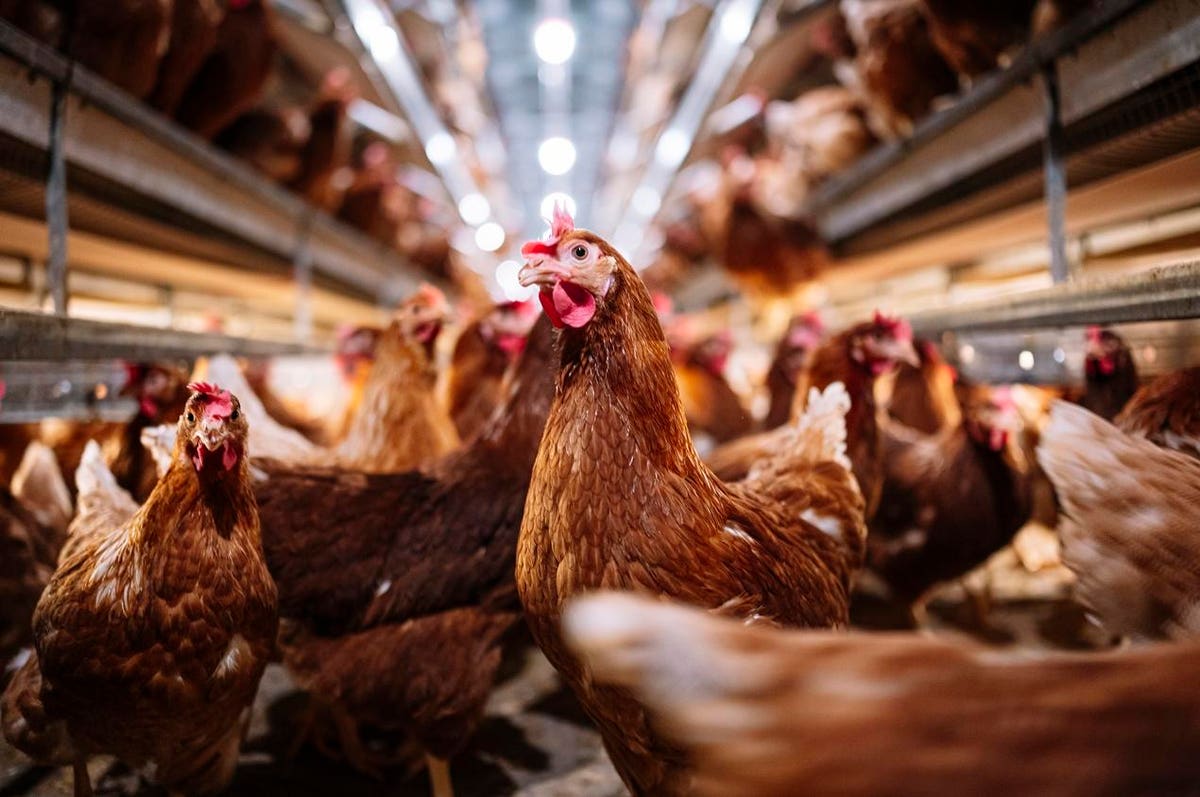Anyone who knows me knows that I’ve got strong feelings about chickens. Not just because they’re strange, fascinating animals — which of course they are — but also because they’re a prime example of the incredible technologies developed by nature.
Imagine someone presents you with their latest invention, in the form of a shiny black box. They pour water and grains, and the box blinks and beeps. From a chute at the other end, out pops an egg, complete with all its complex cellular biology, flavor, and nutritional value. By now you already understand that there’s a chicken in the box, because there’s no conceivable machinery that could have produced something as seemingly simple as an egg.
Chickens are incredible if you think about them in mechanical terms: They are autonomous and efficient, self-reproducing and self-repairing, driven by a tiny logic center to seek out calories that are automatically converted into complex, nutritionally valuable meat and eggs. They are a complete, optimized bio/mechanical/chemical system, and over time humans have learned to exploit these traits to feed the world’s growing population.
Chicken is also neck-and-neck with pork as the top most consumed meat in the world, making it one of the most interesting areas of potential innovation for meeting human dietary needs into the future. When it comes to turning plant based ingredients into structured protein, chicken sets a high bar for flavor, texture, efficiency, and market share. Nevertheless, a new crop of companies is aiming to shake the bird from the top of the roost, and they might actually succeed.
Overclucking the Chicken Factory
Chickens are a battleground for the future of food. They represent one of the biggest addressable markets, with a range of uber-popular products that comes in cutlet, nugget, and other finger-licking formats people already love. To truly compete with the real thing will require more than meeting expectations for flavor and texture — alternatives will have to be great vehicles for ketchup and buffalo sauce, but they’ll also have to be more efficient in production and cost.
In terms of the ratio of nutrition provided to energy consumed, chickens are the most efficient form of conventionally farmed meat — A chicken converts their feed to high quality protein with an efficiency of nearly 20%, while their eggs get an even better efficiency of 25%. Besides that, as a food they are better in terms of consistently replicable texture and flavor, and therefore more competitive in terms of price, than any non-meat alternative. Hence their popularity — can you think of a more iconic snack than a McDonald’s
MCD
Chickens were already great food sources when humans first started domesticating them thousands of years ago. The birds and our relationship with them have evolved since, but from the 1950s to today, our broiler chickens really transformed dramatically. Originally a two-pound creature, by 2021, the average broiler has bulked up to over six pounds. Not just bigger, but better, at least for our purposes, with a more and better quality of meat per pound for less feed. Yet this progress comes with its own costs: antibiotic resistance, environmental impacts, and ethical dilemmas.
One of the most active fronts in the effort to scratch chicken out of the top spot in efficiency and economic advantage is updating the manufacturing of plant-based alternatives in familiar formats: nuggets, tenders and patties. The French company Umiami, for example, has innovated a method of recreating tissue-like strands with all kinds of proteins — soy, pea, gluten, etc — making it possible to recreate whole cuts of chicken and other meat, with less energy and a simpler ingredient list than traditional plant-based chicken. Impossible Foods has recently forayed into the chicken nugget territory, but recently had to issue a recall when small bits of wood were discovered in some of their products, raising questions about just how they are manufactured.
I recently tested chicken cutlets made by a company called Rebellyous (which is what inspired this article). I enjoyed the samples, and would pick them over mass-farmed chicken nuggets any day. The ingredients list contains many of the same binders, emulsifiers and other ingredients typical of plant-based products, but they have managed to greatly improve on your typical textured soy or wheat protein, and most importantly, they have innovated in the manufacturing of the chicken nuggets. Founded by a former aerospace engineer, they’ve devised a bespoke system (the current version is called ‘Mock 2’) that prepares the ingredients separately before combining them.
The usual process, often run on converted meat industry machinery, combines ingredients together into a nugget-like shape before cooking. Rebellyous is essentially creating different “doughs” of protein, that can then be combined under precise temperature and pressure to get optimal flavors and textures from that particular protein, before combining into a finished nugget. The new approach, they say, saves massive amounts of energy, cost, and labor to produce, which could ultimately bring their nuggets to price parity with the real thing. One can imagine the long tail innovation along this curve, displacing more and more industrial-farmed bird meat with something different yet fully satisfying and equally (or even more) affordable.
But when it comes to simulating real chicken, the most compelling approach is real chicken meat grown a new way. Cell-grown meat produces real tissues in petri-dishes or bioreactors, without raising a chicken, theoretically providing the same quality of meat at vast scales, and only the bits that will be eaten while skipping the rest. But the economic effort required to make a piece of lab grown meat — most importantly, the expensive nutrient media that the cells will grow within — is nowhere near the energy efficiency of real meat, whether factory farmed or backyard raised. At least, not yet.
To match chicken in price, one estimate is that cellular chicken must meet or beat a price of $2.92 per pound. A recent life cycle analysis found that cellular meats could, in an optimistic scenario, reach parity with chicken in efficiency, and become far more efficient than beef, pork and other common meat. However, to do so requires addressing the entire supply chain that feeds into the raising, processing, and distribution of chicken (like us, they are what they eat).
With that said, most techno-economic analyses suggest that cell-grown meat faces a steep climb to overcome chicken at anything near market price. Extraordinary claims tend to require extraordinary evidence, after all, and barring a stacked deck of infrastructure, media, and cell division breakthroughs, cell-based meat may remain exactly that: outside the ordinary. Chicken, after all, is itself already close to being an ideal bioreactor.
New manufacturing methods like “Mock 2” can help improve product control and price performance of synthetic foods. By comparison, separating a chicken into its cellular components ultimately increases manufacturing complexity, and as such, puts the producer at an inherent disadvantage. There is ample evidence that reducing meat consumption will be key to preserving a livable planet. When our world is seemingly on the verge of UFOs being real and superhuman artificial intelligences coming online, it’s worth keeping an open mind to the possibilities.
Read the full article here





